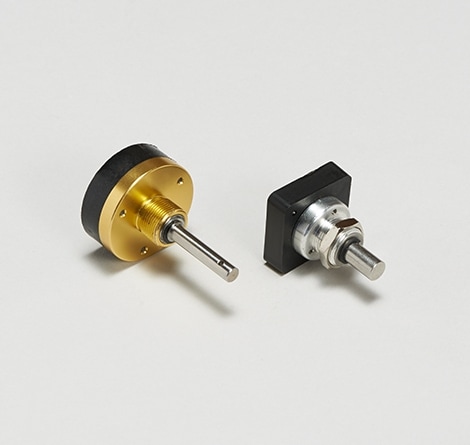
Position encoders and rotary sensors
We offer linear and rotary position encoders, absolute and incremental, based on our AMR (Anisotropic Magneto Resistive) and Hall-effect technologies. These technologies are not affected by dirt, oil, dust or other contaminants, or by changes in ambient lighting conditions. Outputs are either analog or digital. Various off the shelf and custom packaging options are available for our rotary sensors that provide rugged, low cost, non-contacting position feedback for demanding applications.
Product Features:
Rotary Encoder Sensors
- Various standard packages for linear incremental encoder, rotary absolute encoder, and rotary incremental encoder requirements
- Innovative custom packaged solutions for rotary sensing applications using magnetic sensing technology
- Incremental optical encoders available for automation applications
- Housings available in aluminum and stainless steel with IP ratings to IP-65
- Ball and Sleeve bearing types
- Angular Ranges of 270° and 360°
- Various electrical interfaces including analog voltage, quadrature, current, and SSI
Rotary Encoder - Hall Effect
Applications
- Production Machinery
- Positive Displacement Pumps
- 3-D Printers
- Gimbal Mechanism
Rotary Encoder
Hall Effect
Function: Measure linear or angular position
Technologies: MR (absolute and incremental); Hall Effect (absolute)
Applications: High volume; Low cost; non-contact
Power: DC voltage or current
Output: VDC; 4-20mA; TTL level quadrature; PWM; RS485; USB; CAN CiA 443
Ranges: Up to 360 degrees rotary or geared
Package: Plastics; Aluminium; Stainless Steel (incl. high-pressure submersible)
Designs: Standard catalog; standard-expect; custom
Hall Effect - Angular Encoder
How it works:
- A Hall Effect angular encoder consists of a ring that is magnetized in segments that alternate between north and south poling. The ring is attached to a rotating shaft.
- Hall Effect magnetic sensors are placed around the ring to detect its motion as the shaft rotates.
- Electronics on the PC Board demodulate the sensor signals and provide rotational displacement, speed, and direction information





